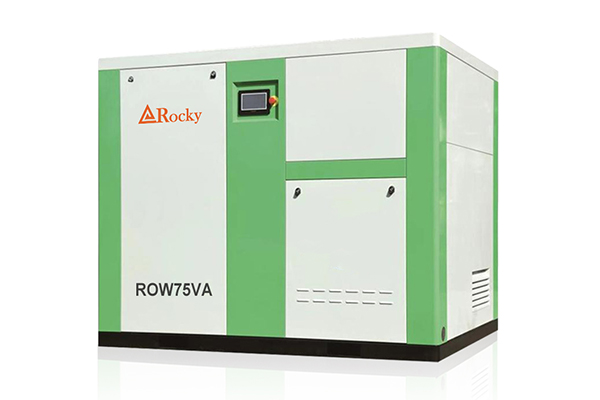
Air compressor (aircompressor in English) is abbreviated as air compressor. It is a machine that converts the mechanical energy of the prime mover (usually an electric motor) into gas pressure energy with ambient air as the raw material to meet the pressure required by the production process. There are many classifications of air compressors, which can be divided into positive displacement air compressors and speed air compressors according to their working principles. The speed type mainly has two basic forms: centrifugal and axial flow. The working principle of the speed type air compressor is to increase the movement speed of the gas molecules, so that the kinetic energy of the gas molecules is converted into the pressure energy of the gas, thereby increasing the pressure of the compressed air.
How to choose an air compressor
How to select air compressors reasonably requires comprehensive consideration of comprehensive technical and economic indicators such as the investment and operating costs of air compressor units and air compressor stations, so that they conform to the principles of economy, safety and applicability. Specifically, there are the following aspects:
1. The flow and pressure requirements required by the production process must be met, that is, the operating point of the air compressor (the intersection point of the device characteristic curve and the air compressor performance curve) must always be operated in the high-efficiency range, which saves power It is not easy to damage the machine parts.
2. The selected air compressor should not only be small in size, light in weight, low in cost, but also have good characteristics and high efficiency.
3. It has good anti-surge performance, stable operation and long life.
4. The structure is simple, the operation is convenient, and the accessories are easy to purchase.
5. The selected air compressor station has low project investment and low operating cost.
The main basis for the selection of air compressors is the working pressure and flow rate of the starting system. The working pressure of the gas source should be about 20% higher than the maximum working pressure in the pneumatic system, because the loss along the way and the local loss of the gas supply pipeline should be considered. If the working pressure requirements in some parts of the system are low, a pressure reducing valve can be used to supply air. The rated discharge pressure of the air compressor is divided into low pressure (0.7~1.0Mpa), medium pressure (1.0~10MPa), high pressure (10~100Mpa) and ultra high pressure (above 100Mpa), which can be selected according to actual needs. The common working pressure is generally 0.7~1.25Mpa.
Air compressor selection steps
Air compressor performance characteristics:
①Air characteristics: local atmospheric pressure, relative humidity of local air, etc.
②The diameter and content of solid dust particles in the air.
③Air temperature: (℃)
④The required flow rate (Nm³/min or Nm³/h)
A. Flow, domestic users often call exhaust. Flow rate refers to the statistics of the gas discharged by the air-air compressor per unit time under the required discharge pressure, and the amount converted to the intake state.
B. The flow unit is: m³/min (cubic meters/minute) or L/min (liters/minute), 1m³ (cubic meters)=1000L (liter);
C. General, the commonly used flow unit is: m³/min (cubic meters/minute);
D. Flow rate is also known as displacement or nameplate flow rate.
E. Pressure: design pressure, maximum working pressure, working pressure.
There are many expressions of pressure units, here we mainly introduce the commonly used pressure expression units of centrifugal air compressors;
①Working pressure, which is often called exhaust pressure by domestic users. Working pressure refers to the highest pressure of the air discharged from the air compressor;
②The commonly used working pressure unit is: bar or MPa, 1bar=0.1MPa;
③Generally, users usually call the pressure unit: kg/㎡, 1bar=1kg/㎡.
F. Piping system data (pipe diameter, length, type and number of pipeline accessories, etc.).
When designing and laying out piping, the following items should be noted:
① Choose the pipe diameter reasonably. The pipe diameter is large, at the same flow rate, the air speed is small, the resistance loss is small, but the price is high; the small pipe diameter will cause the resistance loss to increase sharply, increasing the power of the selected air compressor, and the cost and operating expenses. Therefore, it should be considered from the perspective of technology and economy.
②The maximum pressure that can be withstood should be considered at the air supply pipeline and its pipe joints.
③The pipeline layout should be as straight as possible, minimize the accessories in the pipeline and minimize the length of the pipeline. When turning is necessary, the bending radius of the elbow should be 3 to 5 times the diameter of the pipeline, and the angle should be greater than 90℃ as much as possible .
④The air supply valve and check valve must be installed at the rising pipe of the air compressor. The valve is used to control the operating point of the air compressor. The check valve prevents the air compressor from reversing when the air pressure suddenly increases and the pipeline pressure is higher than the air compressor outlet to prevent damage to the impeller and motor reversal.